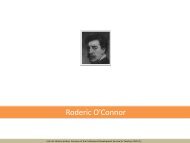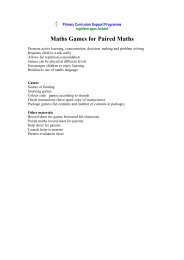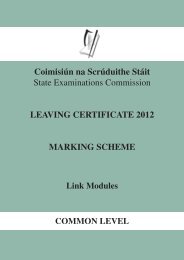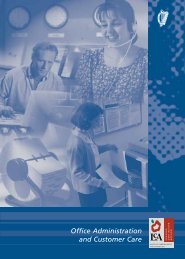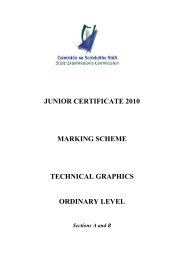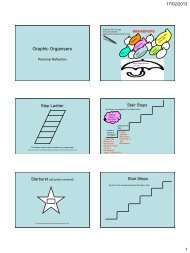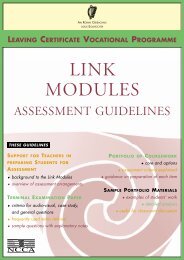What is Four in Balance? - PDST
What is Four in Balance? - PDST
What is Four in Balance? - PDST
Create successful ePaper yourself
Turn your PDF publications into a flip-book with our unique Google optimized e-Paper software.
1 - what <strong>is</strong> four <strong>in</strong> balance?In many cases, schools fail to achieve the benefits that they thought theywould atta<strong>in</strong> us<strong>in</strong>g ICT. For example, a project falters because the teachersare not equipped to use the technology, or because the <strong>in</strong>frastructure thatthe school has chosen does not match the pedagogical approach that teachersfavor. The project then never goes beyond a one-time experiment (Van derNeut, 2010; Van Eck, 2009; 2010). One well-known example was described byZucker <strong>in</strong> an article <strong>in</strong> Science. Zucker looked at the <strong>in</strong>vestment schools <strong>in</strong>the United States had made <strong>in</strong> laptops (Zucker, 2009). Although the schoolshad spent a lot of money on the laptops and related equipment, teachersscarcely changed their lessons and failed to use many of the new options attheir d<strong>is</strong>posal. There was no impact on the way pupils thought or learned.Similar f<strong>in</strong>d<strong>in</strong>gs have emerged <strong>in</strong> studies explor<strong>in</strong>g the impact of <strong>in</strong>teractivewhiteboards (DiGregorio, 2010; Bann<strong>is</strong>ter, 2010).The <strong>Four</strong> <strong>in</strong> <strong>Balance</strong> model allows schools to avoid such pitfalls by help<strong>in</strong>gthem consider, <strong>in</strong> advance, how to organize teach<strong>in</strong>g/learn<strong>in</strong>g and what to<strong>in</strong>vest <strong>in</strong>. Thanks to research, we are com<strong>in</strong>g to learn more and more abouthow best to coord<strong>in</strong>ate the four basic elements. One important f<strong>in</strong>d<strong>in</strong>g<strong>is</strong> that the human factors (v<strong>is</strong>ion and expert<strong>is</strong>e) must be considered first,and only then the material ones (learn<strong>in</strong>g materials and <strong>in</strong>frastructure). Inprevious publications, we referred to th<strong>is</strong> particular coord<strong>in</strong>ation sequenceas “education-driven <strong>in</strong>novation” (Law, 2008; De Koster, 2009). The oppositesequence, which starts with technology or digital learn<strong>in</strong>g materials, <strong>is</strong> knownas “technology-driven” or “material-driven” <strong>in</strong>novation (see Figure 1.2).Education-drivenV<strong>is</strong>ionExpert<strong>is</strong>eDigitallearn<strong>in</strong>gmaterialsICT <strong>in</strong>frastructureTechnology-drivenFigure 1.2: Two coord<strong>in</strong>ation sequences: education-driven (start<strong>in</strong>g from the human factors)and technology-driven (start<strong>in</strong>g from the material factors). Education-driven coord<strong>in</strong>ation hasa better chance of succeed<strong>in</strong>g11



